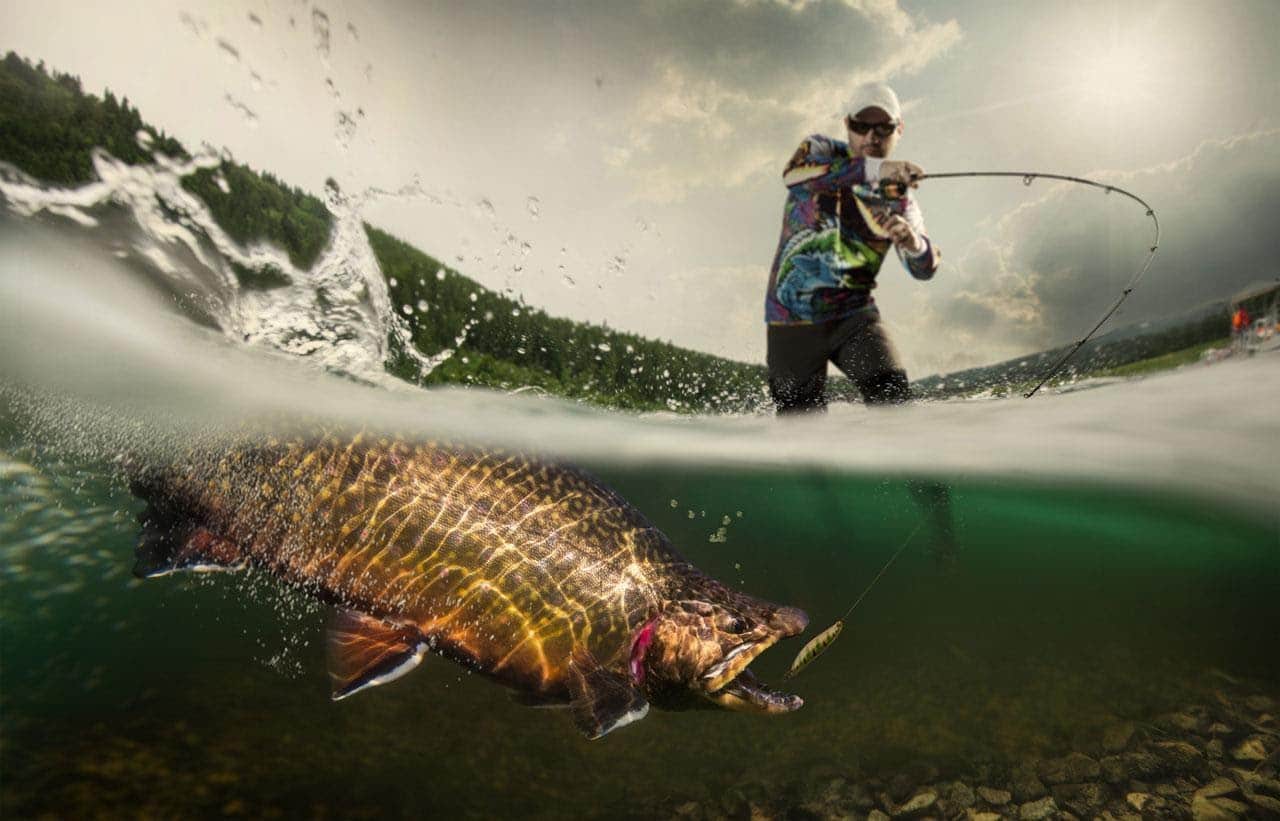Line ratings can get very confusing, and instead of being bombarded with specs and numbers and more specs and numbers, wouldn’t it be better to just be painted a picture about what type of fish can you get with a certain line rating? Well, in this article, let us do exactly just that. Let us discuss what size fish you can catch while using a 10lb line.
A 10lb line is a competent rating, especially when using specific line classifications, most preferably by using braid. A 10-pound line can get you medium-sized fish such as trout and largemouth bass most of the time.
In this article, let us reel ourselves in and investigate the use cases of a 10-pound line, the fish it can get, and the best uses of a 10lb braid.
What Size Fish Can You Catch With A 10-pound Line?
Although not necessarily the thickest, heaviest duty line, a 10-pound line is more than enough if you are not necessarily aiming for the biggest bad boys out there. Not only is this line optimal for use for most fishing trips, but they can also give you relatively abundant medium-sized fish for not a lot of money.
It may get confusing when we’re talking about line ratings, which is why in this section of the article, we will discuss what size fish can be caught on a 10-pound line.
- Largemouth And Smallmouth Bass
Largemouth bass and smallmouth bass are both easy to catch by using a 10lb fishing line. These two carnivores are very starkly in size, as the largemouth bass has an average weight of 10 to 12 pounds (5 kilograms) with lengths of 17 to 20 inches (0.45 meters).
Meanwhile, the smallmouth bass is the smaller brother (hence the name) at 6.6 lbs (3 kilograms) and has lengths of 15 to 20 inches (0.4 to 0.5 meters).
- Catfish
These whiskered fish are pretty easy to catch using a 10-pound fishing line. They may be as heavy as 7 pounds, but most fall in the range of 2 to 6 pounds (3 kilograms).
They can also be as long as 12 to 24 inches or 1 to 2 feet (0.3 to 0.6 meters).
- Panfish
A small pan-sized fish, the panfish, is very easy to catch with a 10-pound line. They are not very heavy as most only weigh up to 2 pounds (1 kilogram) and are no more than half a foot long (15 centimeters).
- Other medium size fish
Since there are a lot of fish easy to catch with a 10-pound line, we will present all the other medium-sized fish that can be caught using a 10-pound line.
| Medium Size Fish | Average Length in Inches | Average Length in Centimeters | Average Weight in Pounds | Average Weight in Kilograms |
| Small Salmon | 28 to 30 inches | 70 centimeters | 3 to 12 pounds | 1.3 to 5.5 kilograms |
| Bluegill | 8 to 16 inches | 20 to 40 centimeters | 2.5 pounds | 1 kilogram |
| Walleye | 30 inches | 75 centimeters | 20 pounds | 9 kilograms |
| Trout | 7.5 to 16 inches | 20 to 40 centimeters | 2 to 8 pounds | 1 to 3.5 kilograms |
What is a 10-pound braid line good for?
A braided line is one of the most substantial qualifications of a fishing line; thus, it would make us wonder what it is capable of.
First of all, a 10-pound braid fishing line is very thin, thus giving it an edge for stealth and bait presentation.
However, it is still a braided line, which means stealth and bait presentation isn’t necessarily its priority.
Knowing that it is still a 10-pound braid line, it is not suitable if you want to catch the biggest fish, even if it is braided.
However, most of the time, its strength and durability (despite its hefty price will pay you off in the long run).
This section of the article will talk about the benefits of using a 10-pound braid line and what it is good for.
- A 10-pound Braid Line Is Good For Finesse Fishing.
Finesse fishing is a type of fishing wherein an angler downsizes their bait, especially when the angler is trying to catch smaller fish. However, still, keep yourself open to the possibility of even larger fish.
Finesse fishing opens you up to more catching opportunities, and oddly, a 10-pound braid line gives you the right amount of strength and the right amount of flexibility.
Suppose you are committed to finesse fishing with a braided line. In that case, it is best to pair it up with a 4 to 8-foot fluorocarbon leader, a thin, nearly invisible line that helps you better your bait presentation for more frequent catches.
Whenever we think about braid fishing lines, we don’t necessarily associate them with increased stealth.
It is essential when the fish you are fishing for (especially when finesse fishing) are very keen on bait presentation or are line shy.
Visiblility
However, the braid lines and their visibility aren’t inherently bad. Since you are using a fluorocarbon leader, the bait presentation will be good. Meanwhile, the visibility of the braid lines helps you keep an eye on your bait.
It would mean that having this splendid combo for finesse fishing helps you have the best of both worlds of visible lines and excellent bait presentation (which most of the time are inversely proportional with each other).
Now for finesse fishing, it is key to note that it is highly recommended for you to use a 10-pound braid as it enhances casting distance.
It would mean that you can cast for longer distances and still see the line. Using heavier lines will result in heavier casts and affect your casting performance while finesse fishing.
- A 10-pound Braid Line Is Good For Fishing On Very Grassy, Dense Areas

If there’s one key takeaway when it comes to braided lines, it is that they are strong. Really strong. It not only helps you secure catches better, but it also enables you to be fully capable when taking on fishing spots that are lush with vegetation.
Moreover, braided fishing lines enable you to fish in areas with lots of lily pads, water hyacinths, and cattails.
This means that by using a 10-pound braid line, you will now be able to catch medium-sized fish in more areas you may not have fished on before!
Pound per pound: Three Frequently Asked Questions About Line Weight and Fishing Lines
- What are the three common types of fishing lines?
There are three common types of fishing lines. Mainly with the thicker, though not as strong, monofilament fishing line, the more robust, more expensive, and the thin, not as strong, but almost invisible fluorocarbon line.
- Are all 10-pound fishing lines the same thickness?
Although it may be easy and quick to assume that all 10-pound fishing lines are all of the same thickness. Most of the time, they aren’t, especially when we’re talking about the different types of 10-pound fishing lines.
Braided 10-pound fishing lines are most often thinner as they can sport more strength per diameter of line.
- When should I use a 20-pound fishing line?
A 20-pound fishing line is suitable for use on many occasions. If you are willing to make small compromises, a 20-pound fishing line can be used for many use cases.
They can be used to catch both small, medium, and large sizes of fish without a problem.
Conclusion
Well, now you know everything you need to know about what size fish you can catch with a 10lb fishing line. If you have any questions or comments feel free to leave them in the comments section below. Until next time Happy Fishing!



Cory Haasnoot
Cory is a content writer-editor and founder of Tackle Box Talk. Favorite Quote: "Give a man a fish, and you feed him for a day. Teach a man to fish, and you feed him for a lifetime."